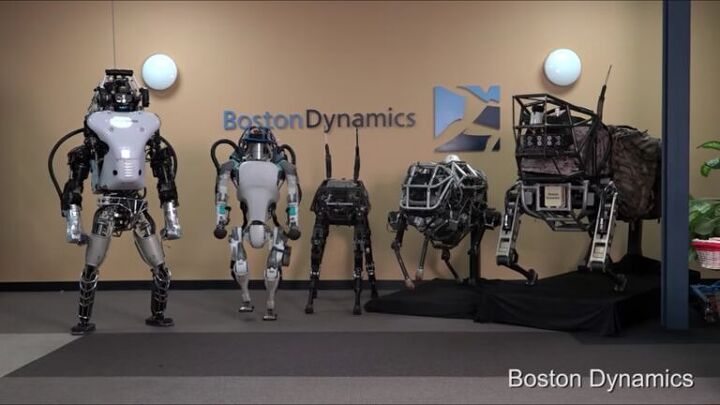#MIT
Toyota to Study Advanced Driving System Interactions
Toyota will be launching nine new studies over the next five years to improve automotive safety, specifically in relation to how drivers engage with advanced driving aids equipped to modern vehicles. While the press release to a back seat to the automaker receiving an award for hiring female engineers and a $400,000 donation to the National Environmental Education Foundation, it’s likely to have broader ramifications on the industry.
Despite launching a bevy of new assistance features over the past few years, manufacturers haven’t actually spent all that much time studying how they might impact the act of driving. Testing usually focuses on ensuring the system functions, with independent research being left to examine how electronic helpers might influence behavior from behind the wheel. Unfortunately, preliminary studies have suggested that they lull motorists into a false sense of security, potentially offsetting any legitimate safety advantages the relevant technologies provide.
What Does Toyota Want With a Legged-Robot Company?
You’ve probably seen one of its videos on YouTube. Its creations are nightmare fuel, mixed with a sense of wonder and intrigue. And for one particular automaker, its robotic inventions seem worthy enough to trigger the purchase of a whole company.
It is Boston Dynamics — a company born from the MIT leg lab that’s been developing quadrupedal and bipedal robots since 1992. And Toyota is heavily rumored to be purchasing the company from Google, according to Tech Insider.
Which begs the question: what does a car manufacturer want with a legged-robot company?
Wary or Enthusiastic? MIT Wants Your Views on Automated Driving Technologies
Like it or not, autonomous vehicles are coming in one form or another.
Many new cars on the market already have features that help a driver stay in the driving lane, keep a safe distance from the vehicle in front, or reduce the severity of a collision. Much like the original stability control, these features may frustrate enthusiasts but they help keep the masses safer and might reduce accidents.
Each year, the Massachusetts Institute of Technology and the New England Motor Press Association hold a conference that focuses on various future trends and technologies. This year’s topic is The Intersection of Technology and Design, with a panel discussion exploring trends and challenges as autonomous technology meets the natural aesthetic appeal of the automobile.
Toyota Launches AI Efforts With $1 Billion Investment
Toyota will open a new artificial and robotics R&D company to be called Toyota Research Institute, Inc. (TRI) with an initial investment of $1 billion to open two locations in the United States, the automaker announced Friday.
TRI, which will make its headquarters in Palo Alto, California and establish another office in Cambridge, Massachusetts near MIT, will be led by Dr. Gill Pratt, a former academic in the field of engineering and program manager at DARPA.
“The investment is in addition to the $50 million investment over the next five years with MIT and Stanford to establish joint fundamental artificial intelligence research centers at each university,” said the automaker in a release.
Autonomous War Games: The Only Way To Win is Not To Drive
Researchers at the Massachusetts Institute of Technology said Thursday that in the future, self-driving cars may be forced into the moral quandary between saving its driver or saving the public in massive, horrific crashes.
We already know that.
What researchers are now looking at is whether people would be interested in buying cars that would knowingly sacrifice their drivers in order to serve the greater good.
(In our best Richard Dawson voice) “Survey says … “
Toyota Will Spend $50M Researching The Perfect Robot Car
Toyota announced Friday it would invest $50 million in research facilities at Stanford and the Massachusetts Institute of Technology to study and develop artificial intelligence for future safety and autonomous driving.
The facilities will teach computers to recognize and monitor objects — a swerving car vs. a parking one was provided as one example — on the road that drivers are too busy for because “Candy Crush.”
The joint programs at MIT and Stanford will first develop enhanced safety systems designed to “share control” with drivers and computers. Eventually, researchers believe, people will just forget that they care and give up driving to the robots.
A Sober Second Look At Self-Driving Cars
While TTAC‘s Mike Smitka published an essay urging readers to reign in their expectations regarding autonomous cars, a new report by MIT’s Technology Review pours even more cold water on the utopian fantasies of those waiting for the day when humans are no longer in control of the automobile.
MIT Professor: Put Cars On A Diet!
The car industry is under pressure to improve fuel efficiency. It is not that they have been sitting on their thumbs. Automakers have achieved large increases in fuel efficiency through better technology in recent decades, says MIT economist Christopher Knittel.
The problem is:
“Most of that technological progress has gone into compensating for weight and horsepower.”





















Recent Comments